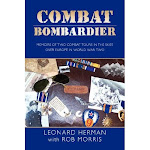

Sage remains one of the most fascinating characters of World War Two. Here is his biography on the Air Force Website:
"Major Jerry M. Sage was an Army Special Operations paratrooper who was wounded and captured in February 1943 while blowing bridges behind General Erwin Rommel's lines in North Africa. He posed successfully as a shot-down airman (and thus avoided being shot) and was brought into Stalag Luft III in April 1943. He was a great leader and was very active in organizing and executing escape attempts. After escaping from South Camp twice, the Germans got tired of his trouble-making and sent him to the U.S. Army officers camp, Oflag 64. He again escaped when this camp was evacuated in January 1945 and got home early through the Russian lines."
The feature film of the Great Escape was made by the Mirish Company and released in 1963. The director, John Sturges, had bought the rights to Paul Brickhill's book and was well known for films such as Gunfight At The OK Corrall, Bad Day at Black Rock, and The Magnificent Seven. Filming on The Great Escape began in the summer of 1962.
The screenwriter was James Clavell (of SHOGUN and KING RAT fame) who was himself a PoW of the Japanese during WW2.
The prisoner-of-war camp was renamed Stalag Luft Nord and was built amongst pine forests near Munich in Bavaria, with interiors shot at local studios. One of the technical advisors was former F/Lt Wally Floody, a Canadian mining engineer and wartime Spitfire pilot, who had been responsible for the tunnel traps and their camouflage.
Nearly all of the incidences, both serious and humorous, which are shown in the film are completely true, although there is some inevitable telescoping of events, and many characters are rolled into one. In particular, the method of "stooging" (keeping watch for German guards and ferrets) is well demonstrated, and the method of constructing the tunnels is extremely accurate.
There was indeed Christmas Carol singing taking place to mask the sound of "manufacturing" and "building" whilst escape materials, air piping, and compasses were made, and concrete plinths pierced. (The Germans did not seem to notice that, at the time, it was nowhere near Christmas.) The trap for "Dick" in the wash-room floor is particularly well shown - the Germans never found it, because 'Dick' had a perfect disguise. In the film, whilst the escape takes place through the tunnel called 'Harry' the trap is portrayed as being in the wash-room floor, and is definitely that of 'Dick' in real life.
The camouflage of the traps used for 'Tom' and 'Harry' is again extremely accurate and reflect the advice given by Wally Floody. Manners of the guards and ferrets, and even the way some of them were suborned, is again quite true to life. "S/Ldr Roger Bartlett" gives a good impression of the driving power behind Squadron Leader Roger Bushell, but his sister said that Dickie Attenborough, who played the part, looked nothing like him. Dickie even had the facial scar of Bushell, incurred in a prewar-skiing accident (he was an Olympic skier) which often caused him discomfort."
"Group Captain Ramsey", the SBO or Senior British Officer, has the severe leg injury suffered by his real counterpart, G/C Herbert Massey, who in real life was repatriated shortly after the escape, and who was instrumental in bringing the atrocity to the attention of H.M. Government.
The sequence where several prisoners hide in an outgoing lorry loaded with cut tree branches actually happened, almost exactly as shown; also, the piece where Bronson and Coburn try to escape masquerading as Russian prisoners is remarkably close to an actual escape attempt. True, too, is the scene where McQueen, having removed numerous bedboards, watches helplessly as a fellow prisoner crashes through his fatally weakened bunk and lands on the man below.
Steve McQueen (Hilts, the Cooler King). Likely to be an amalgamation of several characters, he has no direct counterpart, although one likely candidate is Jerry Sage. The sequence where McQueen sees a blind spot in the guards' coverage of the perimeter wire is true; this escape was by Toft and Nichols, who cut through the wire but were soon recaptured. The motorcycle sequences are pure Hollywood and were put in at McQueen's request; he did nearly all the stunt riding himself, as the long shots show. The single motorcycle was in fact a pair of 1961 British 650cc Triumphs, mocked up in German colours; the final leap is believed to have been done by the American rider Bud Elkins, as it proved impossible for the film company to obtain insurance cover for McQueen to do it himself. For the final leap, there is obviously a ramp just out of camera frame, over which the rider launches the motorcycle to get the necessary height for the jump over the barbed wire fence.
There was indeed a group of prisoners (headed by Jerry Sage and Davey Jones) who manufactured raisin wine and distilled raw liquor from vegetables and virtually any ingredient. The party on the 4th July actually happened, although 'Tom' was not discovered on this particular day."






6 comments:
I had the honor of meeting Col. Sage when I was in middle school. He was an amazing person, with unbelievable experiences. He had a love of teaching children, and spoke at our school. I was fascinated! I still have this book that I bought after meeting him. I am in fact giving it to my 12 year old son to read today. This is one of my favorite books written about WWII.
I had the honor of meeting Col. Sage when I was in middle school. He was an amazing person, with unbelievable experiences. He had a love of teaching children, and spoke at our school. I was fascinated! I still have this book that I bought after meeting him. I am in fact giving it to my 12 year old son to read today. This is one of my favorite books written about WWII.
Jerry Sage was an acquaintance of my mother in Post-war Germany and the Post Commander in Furth, Germany when I was in High School. When he was first introduced to myself and my classmates, we were told that there's a lot of incredible stories out there about him but the best will never be written.
I had the extreme honor of meeting Major Sage ("Dagger") while I was stationed at Fort bragg, NC, in 1986. He spoke to our unit about his POW time, as well has his experiences at being able to convince his captors (Italian & German) that he was an Air Force pilot. If they had known that he was an OSS operative, he would have been shot on the spot! It was indeed fascinating to hear of his experiences, both wartime, & the post-war years as well!! He laughed when we asked him about his character in "The Great Escape", & told us that most of the depiction was correct, but that he never tried to jump a motorcycle over the border fence to Switzerland ... which was pure Hollywood!! He was recaptured however following a break-neck motorcycle chase that was over 10 miles in length!! I feel very fortunate to have a signed copy of his book!!!
Jerome"Gerry" Sage is my Dads 1st cousin.
Col Sage was my home room and history teacher while I was at Spring Valley HS in Columbia, SC. This was 1977-1978. What a great man who loved his family and students. He was my favorite teacher in HS. Loved his stories as he really was there. The Army has named the Robin Sage exercise after him.
Post a Comment